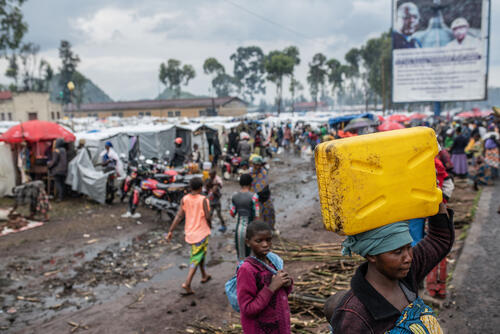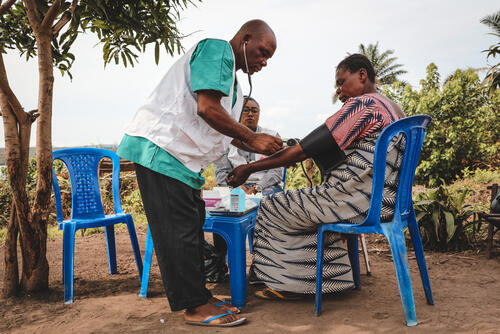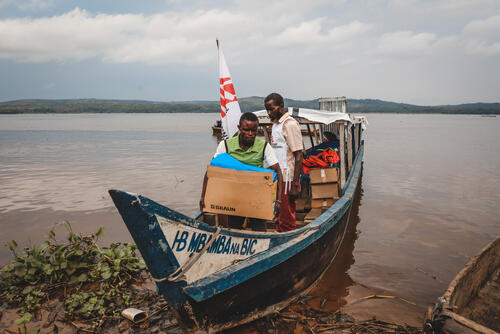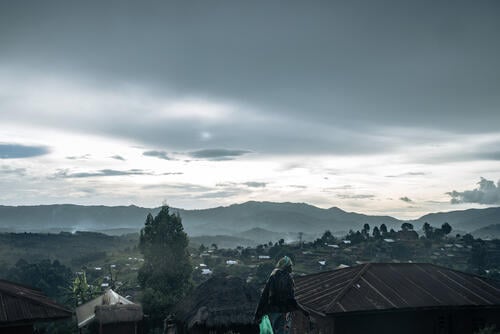Tens of thousands of people have sought safety in informal camps in Kanyaruchinya and the surrounding areas, 10 km north of Goma, in the Democratic Republic of Congo (DRC).
They have fled the renewed fighting between the March 23 movement (M23) and the Congolese army in the region of Rutshuru. An urgent response from humanitarian actors is required to meet the huge needs of these people.
Situated on the road between Goma and Rutshuru, Kanyaruchinya was already hosting thousands of people displaced by previous rounds of fighting in the past few months and people affected by the May 2021 volcanic eruption. Their living conditions were already extremely precarious, and the arrival of a new wave of displaced people has significantly increased the needs of those living there.
“In just a few days we have seen thousands of people quickly build shelters of eucalyptus branches and leaves collected in the surrounding forest, all whilst it is raining,” says Dr Maria Mashako, Médecins Sans Frontières (MSF) medical coordinator in DRC.
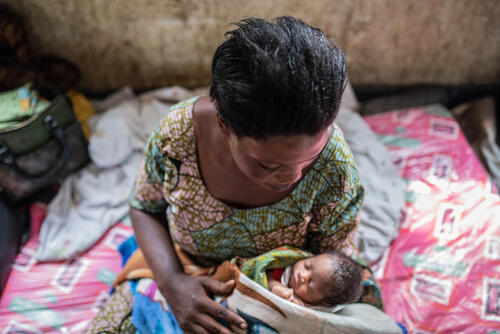
Schools turn to shelters
“The families have only brought the bare necessities with them as they fled. They lack everything: healthcare, shelter, food, water, toilets,” says Dr Mashako.
According to the provincial authorities, as of 3 November, at least 74,000 people need aid just outside of Goma following the latest massive displacements. It remains very difficult to know exactly how many people have arrived in the past days, as the arrivals have been so numerous and sudden.
“Some sites where we go regularly were empty only two weeks ago and now are full to bursting,” says Dr Mashako. “Judging by what we can see, the people of Kanyaruchinya seem to have tripled in the space of a weekend,” she says.
The newly arrived families have settled wherever they can, including in schools, leading to a makeshift cohabitation between students and the displaced.
“We walked for more than 15 hours to get to Kanyaruchinya. Now we are here with our neighbours behind the school in Mugara, without anything,” says Jean-Claude. He fled the fighting in the region of Rugari.

Overwhelming needs
At the MSF-supported Kanyaruchinya health centre, the number of consultations has increased dramatically, from an average 80 per day in October to 250 in November. To respond to the increasing medical needs we are strengthening our support to the centre’s medical team, in order to receive patients 24 hours a day.
Our teams have been supporting the centre since July to enable the provision of free and quality healthcare to displaced people, including those displaced by the volcanic eruption, and all the inhabitants of the area. Respiratory infections, diarrhoea, and skin infections are the most common illnesses treated by the team.
Since July, over 10,000 consultations have been provided at the health centre, and more than two thirds have been for displaced people. Faced with the serious lack of humanitarian actors present in the past few months, we have also been providing water at numerous sites in the health areas of Munigi and Kanyaruchinya.
The crowded camps and the poor hygienic conditions mean that waterborne diseases, like cholera, are likely to spread, as well as other epidemic illnesses.Dr Maria Mashako, MSF medical coordinator in DRC
“The crowded camps and the poor hygienic conditions mean that waterborne diseases, like cholera, are likely to spread, as well as other epidemic illnesses,” says Dr Mashako. “Since the weekend of 29-30 October, we have doubled our distributions of drinking water. We are now delivering 200,000 litres of water per day across more than 10 sites. Despite that, our action is limited when compared to the scale of the needs,” she says.
The intensifying rains in the past few weeks have accentuated the precarious living conditions for people, exposing them to illnesses such as respiratory infections and malaria. Ensuring people have access to decent shelter is therefore a priority. The lack of food is also a serious concern: without access to their fields and without a source of income, the majority of families are dependent on humanitarian aid to eat.
MSF response for displaced people in Kanyaruchinya
250
25
200,000
200,
120
12
The threat of sexual violence
“Since the beginning of our work in Kanyaruchinya we have treated nearly 120 people who have been victims of sexual violence, more than 80 per cent of whom have been displaced,” says Dr Mashako. “The majority of survivors come to the centre within 72 hours and tell us that they were attacked on the road while looking for food and wood to burn for heat,” she says.
“At this moment it is crucial that the promises other humanitarian actors turn into concrete responses, including actors in the field of protection. It is vital that they come to help these people in need.”
In addition to the area of Nyiragongo, our teams are also present in Rutshuru, Binza, Kibirzi, and Bambo, in Rutshuru territory, where we continue to offer vital medical assistance to the host population, while also evaluating how best to respond to the needs of those who have been newly displaced.
The intermittent clashes between the Congolese army and the M23 since the end of March 2022 had already pushed at least 186,000 people to flee their homes. Now tens of thousands more people have come to be added to that figure.



